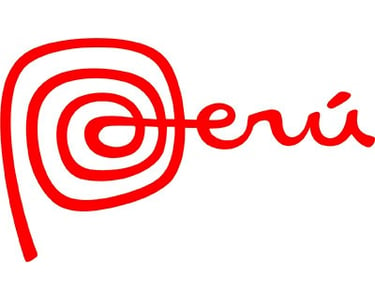The Sacred Valley of Peru: Mystical Land of the Incas


Nestled between the majestic Andes mountains and the ancient city of Cusco, the Sacred Valley of Peru is a region steeped in mystery, beauty, and spiritual energy. Known to the Incas as the "Wilcamayu" or "Sacred River," this fertile valley stretches along the Urubamba River, winding past ancient ruins, indigenous villages, terraced hillsides, and hidden ceremonial sites. For travelers, spiritual seekers, and history lovers alike, the Sacred Valley offers a transformational journey into the heart of Incan civilization and the energies of the Andes.
In this article, we’ll explore:
What the Sacred Valley is and where it’s located
The origins of its name
Key destinations within the Sacred Valley
Travel tips to enhance your experience
What Is the Sacred Valley of Peru?
The Sacred Valley, or Valle Sagrado de los Incas, is a region in the Andean highlands of Peru that extends from Pisac to Ollantaytambo, and in many modern interpretations, all the way to Machu Picchu. This lush, fertile valley was a vital area for the Inca Empire, used for agriculture, astronomical observations, spiritual ceremonies, and elite retreats.
Its high energy, dramatic landscapes, and concentration of sacred Inca sites have made it a favorite among both spiritual travelers and history enthusiasts. From ancient cities to living Quechua traditions, the Sacred Valley is a place where the past is vibrantly alive.
Origins of the Name “Sacred Valley”
The term "Sacred Valley" comes from the spiritual reverence the Incas had for the Urubamba River, which they called Wilcamayu or Willka Mayu, meaning "Sacred River" in Quechua. This name wasn’t arbitrary.
Why Was the Valley Considered Sacred?
Connection to the Cosmos: The Incas believed the Urubamba River mirrored the Milky Way (Mayu) and flowed with cosmic energy. The alignment of sacred sites along the river is thought to correspond with stars and constellations.
Fertility and Life Source: The river’s fertile banks supported advanced agriculture, including terraced farming and irrigation. The valley was considered the empire’s breadbasket.
Spiritual Vortex: Shamans and modern energy workers believe the Sacred Valley emits a high vibrational frequency—an energetic field tied to Earth’s ley lines.
Where Is the Sacred Valley?
The Sacred Valley is located in the Cusco Region, about 15 km north of the city of Cusco. The valley runs roughly east to west, flanked by the snow-capped Andes and cut through by the Urubamba River.
Main Entry Points:
Cusco: Ancient Incan capital and main airport hub.
Pisac: Eastern gate to the valley, famous for its market and ruins.
Ollantaytambo: Western edge of the valley and starting point for many Machu Picchu hikes.
Which Places Are Included in the Sacred Valley?
The Sacred Valley is home to some of the most significant Inca archaeological sites, each with its own unique history, energy, and purpose.
1. Pisac
Famous for its mountaintop ruins, with agricultural terraces and ritual baths.
The Pisac Market is one of the most vibrant traditional markets in Peru.
Astronomical alignments at the Intihuatana (Sun Hitching Post) reveal the Incas' cosmic knowledge.
2. Urubamba
Often overlooked, this town offers a peaceful escape and is surrounded by small farms.
Known for its beautiful mountain views and riverside charm.
3. Ollantaytambo
A living Inca city with original streets and structures still in use.
The fortress ruins were a stronghold during the Spanish conquest.
Also served as an Inca administrative and religious center.
4. Chinchero
Called the “Rainbow Village,” Chinchero is famous for its traditional weaving, vivid sunsets, and spiritual atmosphere.
Home to a colonial church built atop an Inca palace.
Sacred terraces and ritual fountains are still in use today.
5. Moray
A mysterious site with concentric circular terraces believed to be an agricultural laboratory.
Theories suggest different temperature zones for experimenting with crop adaptation.
6. Maras Salt Mines (Salineras de Maras)
Thousands of ancient salt pans are still in use today.
Saltwater from a subterranean stream evaporates in the sun, a practice dating back to pre-Inca times.
7. Yucay
Quiet village with important ruins and colonial architecture.
A less-visited spiritual stop with strong energy fields and meditation spots.
8. Lares
Located northeast of the Sacred Valley.
Known for the Lares Trek, a scenic alternative to the Inca Trail.
Machu Picchu: Part of the Sacred Valley?
Though technically outside the traditional valley, Machu Picchu is often considered part of the Sacred Valley experience. It was an elite spiritual retreat and ceremonial site.
Built in perfect alignment with astronomical phenomena
Only accessible via train or multi-day treks from Ollantaytambo or Cusco
The site is built with precise stonework that has baffled modern engineers
Hidden History of the Sacred Valley
1. Energy Grids
Many researchers and mystics believe the Sacred Valley sits on a major Earth energy grid—a system of ley lines that connect power spots around the globe. Sites like Machu Picchu, Ollantaytambo, and Moray may be aligned with these energetic meridians.
2. Symbolism in the Landscape
The Incas saw sacred animals in the contours of the land. Some believe:
Ollantaytambo resembles a llama
The Urubamba River flows like a serpent
Sacred mountains (Apus) like Veronica and Salkantay hold spiritual presence
3. Ollantaytambo: A Star Map?
Some historians theorize that Ollantaytambo's layout mirrors the constellation of the Southern Cross, with temples representing specific stars.
4. Chakana Cross
The Chakana, or Incan Cross, is a symbol found throughout the valley. It represents the three realms:
Hanan Pacha (upper world of the gods),
Kay Pacha (present world of the living),
Uku Pacha (inner world or underworld).
Its geometry is embedded in temples and terraces and is often aligned with solstice sunrises.
5. Acoustic Miracles
Sites like Pisac and Moray have strange acoustic properties. Whispers can echo or amplify due to the design, suggesting sophisticated sound engineering for rituals.
6. Pre-Inca Civilizations
Long before the Inca Empire rose, the Wari, Killke, and other cultures built early settlements in the valley. Some ruins predate the Incas by hundreds of years.
7. Portal Legends
Local shamans tell of “interdimensional portals” in the valley—doorways in stone where the veil between worlds is thinner. One such rumored site is in the hills above Pisac.
Sacred Valley Travel Tips
Best Time to Visit
Dry Season (May–October): Clear skies and cooler temperatures.
Wet Season (November–April): Fewer tourists, lush landscapes, but rainy conditions.
How to Get There
Fly to Cusco and then take buses or taxis into the valley.
Trains to Machu Picchu depart from Ollantaytambo.
Travel Mindfully
Engage local guides and respect sacred sites.
Many ruins are still used in ceremonies by indigenous communities.
Leave no trace, and avoid climbing on ancient stones.
Spiritual Experiences
Join a ceremony with a Q’ero shaman (descendants of Inca priests).
Participate in ayahuasca or San Pedro plant medicine (only with reputable, ethical guides).
Visit during Inti Raymi (Festival of the Sun in June) for authentic cultural immersion.
Why Visit the Sacred Valley?
The Sacred Valley of Peru is more than a destination—it is a living book of ancient wisdom, mystical energy, and breathtaking landscapes. Whether you’re hiking through ancient terraces, meditating at stone altars, or sipping coca tea while listening to Quechua legends, the Sacred Valley invites you to slow down, reconnect, and awaken.
It’s no surprise that so many travelers leave this region transformed. As the Incas once believed, to walk this land is to walk the stars mirrored on Earth.
Don't forget to book your tour with LET'S PERU IT.




